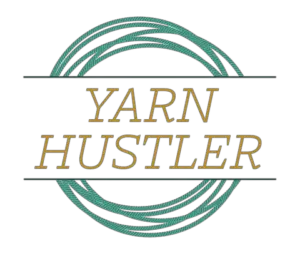Before you even begin creating yarn, one thing is vital to the process: fiber. Fiber can come in many different preparations including roving. So what is wool roving?
Wool roving is a thick strand of carded wool made specifically for spinning soft and fluffy yarns. Other types of fiber preparations include top, batts, rolags, and wool locks. What kind of fiber preparation you use will affect the characteristics of the yarn you create.
As you can see, there are a lot of options when it comes to picking fiber. I’m going to break down each one and discuss how they’re made and what kinds of yarn they produce. Without further ado, let’s talk about what is wool roving.
Table of Contents
What is Wool Roving?
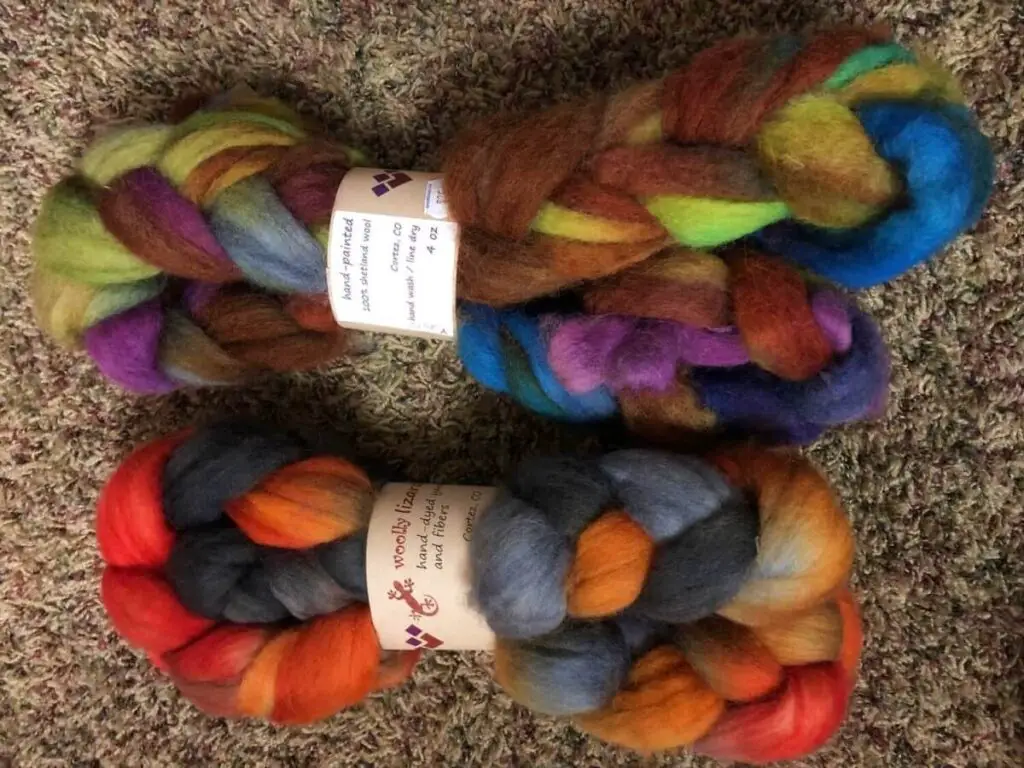
Wool roving is the bread and butter of the fiber world. It’s one of the easiest to make and the easiest to use. But that doesn’t answer the question: what is wool roving. So, let’s dig in and discuss it.
Before we begin, here’s a quick note to make. Although roving is typically made of wool, roving can be created using any type of fiber or fiber combination.
So, although we’ll be talking about wool roving here, all this information will also apply to other types of rovings as well.
First, let’s talk about how wool roving is made.
Roving is made by pulling strips of fiber off of a fiber preparation device called a drum carder. Here’s what a drum carder looks like but they can be a lot bigger if they’re being used in large wool mills.
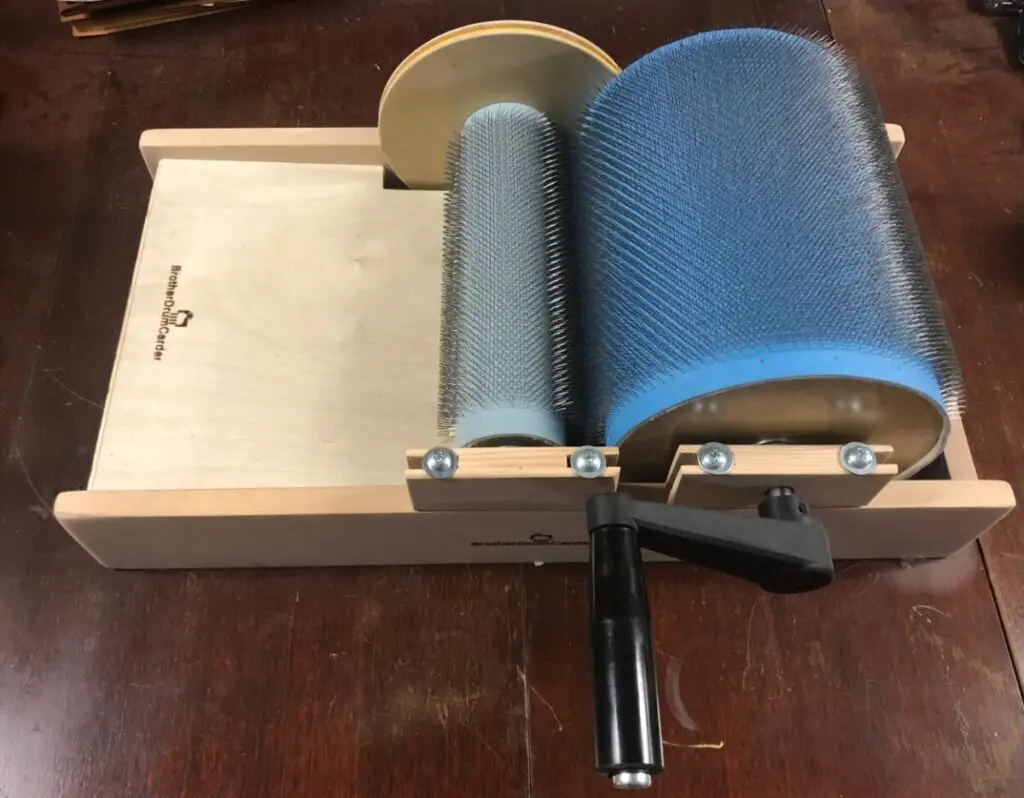
I know it looks like a medieval torture device, but this device brushes the wool to fluff it up and helps remove any debris that wasn’t removed after washing such as hay and grass particles.
Drum carders are also used a lot to create fiber blends by layering the fibers on top of one another.
Once the fiber is ready, the fiber is pulled off the drum carder in one continuous strip creating a long, thick strand of fluffy fiber.
Each type of fiber preparation gives the finished yarn certain characteristics, so, now that we know how soft wool roving is made, let’s talk about its characteristics.
Because of the teeth on the drum carder, the individual fibers in the roving get all jumbled together. This jumble makes yarn made with roving extra fluffy. It also makes the fiber grippy which makes it excellent for the beginning spinner.
If this super fluffy fiber is spun in a specific way, called long draw, you create a type of yarn called woolen yarn. Woolen yarn is known for its exceptional softness and warmth which makes it great for warm winter clothing.
Now that we’ve talked about what is wool roving, let’s talk about some other types of fiber preparations, how they’re made, and what kinds of yarn they create.
4 Other Types of Fiber Preparations
Wool roving is but one of many types of fiber preparations. I wouldn’t feel right about not mentioning all the other kinds so let’s get to it.
Other than just raw wool, the other most common types of fiber preparation you’ll see are top, batts, rolags, and wool locks.
Top
Top is very similar to roving in that it’s a long continuous strand of fiber. However, it’s made using wool combs instead of a drum carder. Here are some wool combs, I know they look just as scary as the drum carder.
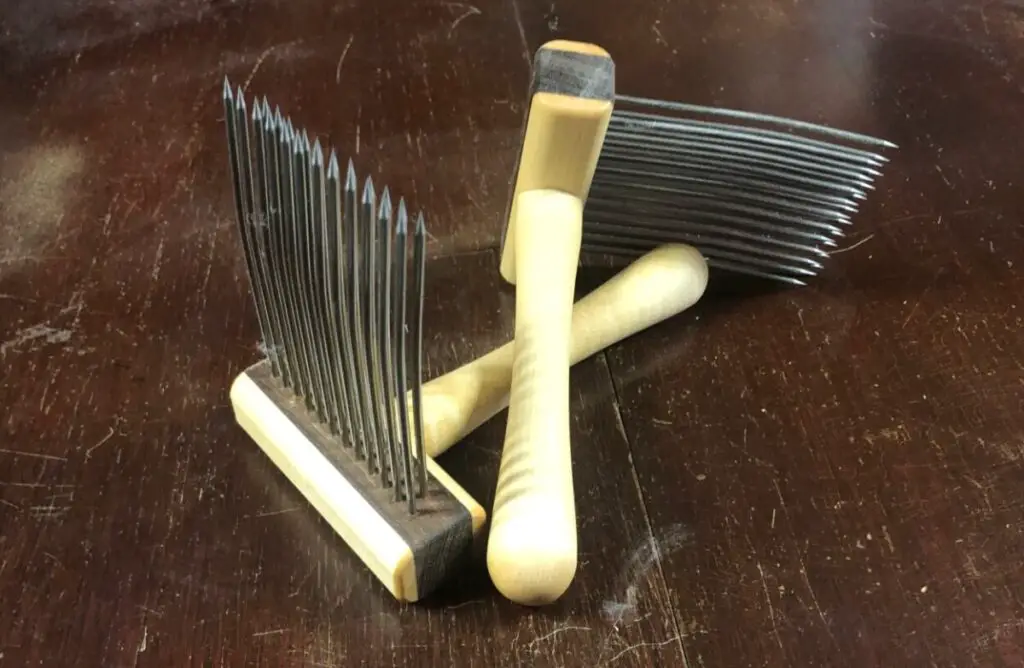
Wool combs differ from carders because, instead of jumbling up the individual fibers, they smooth them out and align all the fibers.
This alignment makes the fiber super sleek and durable and, if spun in a certain way called short draw, creates yarn called worsted yarn.
Worsted yarn is known for its sleek, shiny look and has the characteristics of being strong and having a good drape.
These characteristics make them great for things you need to be strong such as socks and gloves, and things you want to have good drape such as shawls or wraps.
Because roving and top are so similar, it’s sometimes hard to tell them apart. Many manufacturers that don’t create fiber specifically for spinning don’t understand that there are differences between them and label them all roving.
So, here’s an easy way to tell them apart. When you get a bundle of roving or top, take a section and pull it off the end. You will be left with a fluffy tail.
Take a look at your fluffy tail. If all the fibers are the same length, you have top, if the fibers are at all different heights, you have roving. Here’s a visual of what I mean:
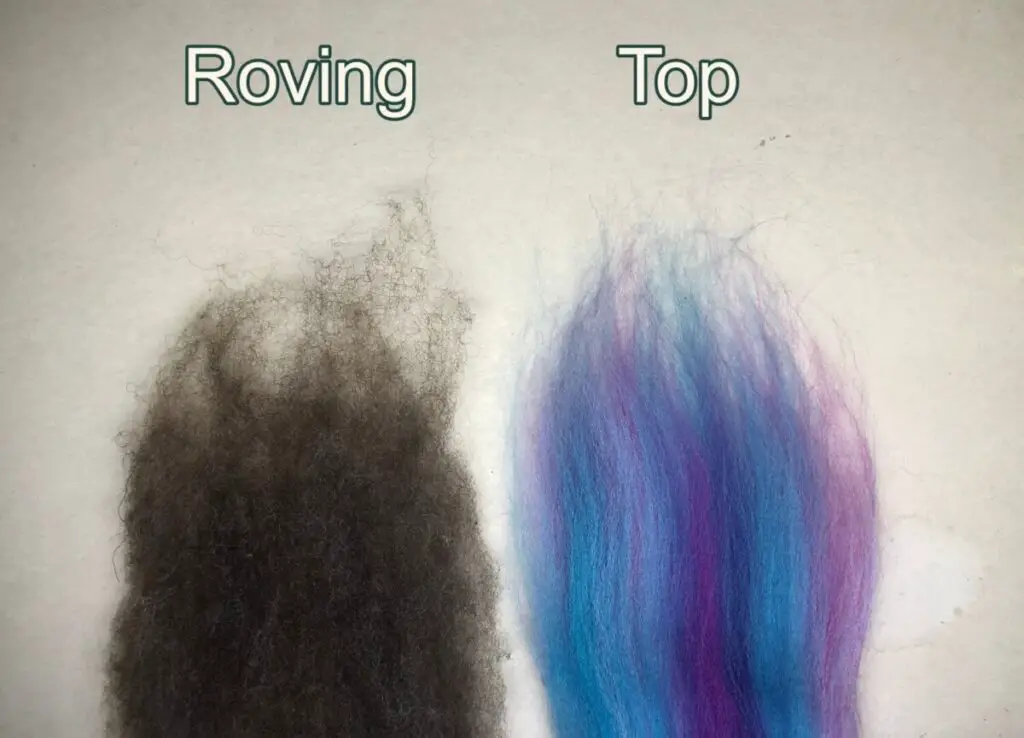
Both of these fibers are Merino but notice that the roving on the left is fluffy and jumbled and the top on the right is smooth and aligned. Clear as mud, right?
Now let’s talk about some other fiber preparations.
Batts
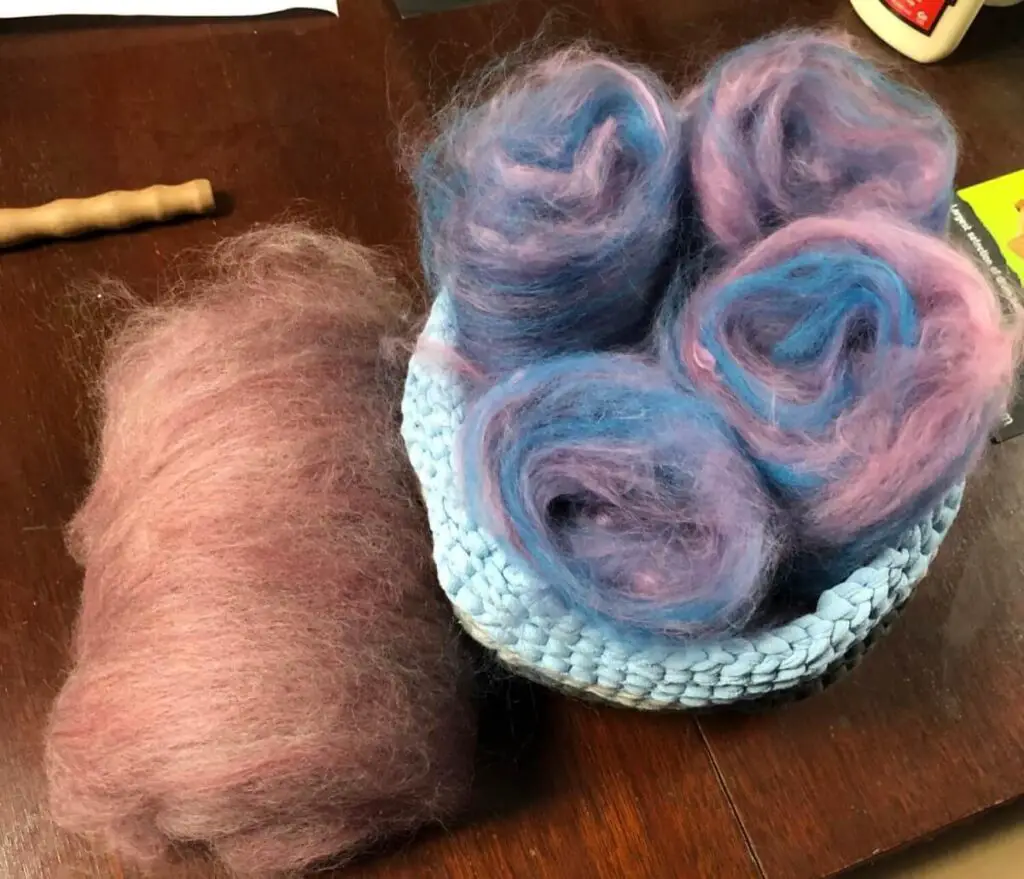
Batts are also made on a drum carder and are what you get if you just take the fiber off the drum carder in a different way than roving.
Instead of taking the fiber off in strips, batts are taken off the drum carder in one large blanket of fiber. If you buy a batt it will probably come rolled up in a little log.
A lot of batts are made from blends of fiber and are left in the blanket form to keep the different blends of fiber where the fiber artist intended them to be. Because of this, batts are often used to create interesting art yarns.
To spin a batt, you can either create your own strips of fiber or spin directly from the batt. However, spinning directly from the batt can be very clunky and hard to manage because of the large amount of fiber you have to manage.
Just like roving, batts are a woolen preparation so the yarn created with a batt will be fluffy and soft.
Rolags
Moving right along with our fiber journey, next up we have rolags.
Once again, rolags are made on carders which makes them another woolen preparation. They are rolled cylinders of fiber pulled off a single small section of a carder.
Because they’re smaller, rolags are usually made on hand cards or a blending board although you can also make them on drum carders as well.
Hand cards are just the smaller version of a drum carder and can be considered the Original carders because they were used to card wool long before drum carders were invented. Here’s what a set of hand cards looks like.
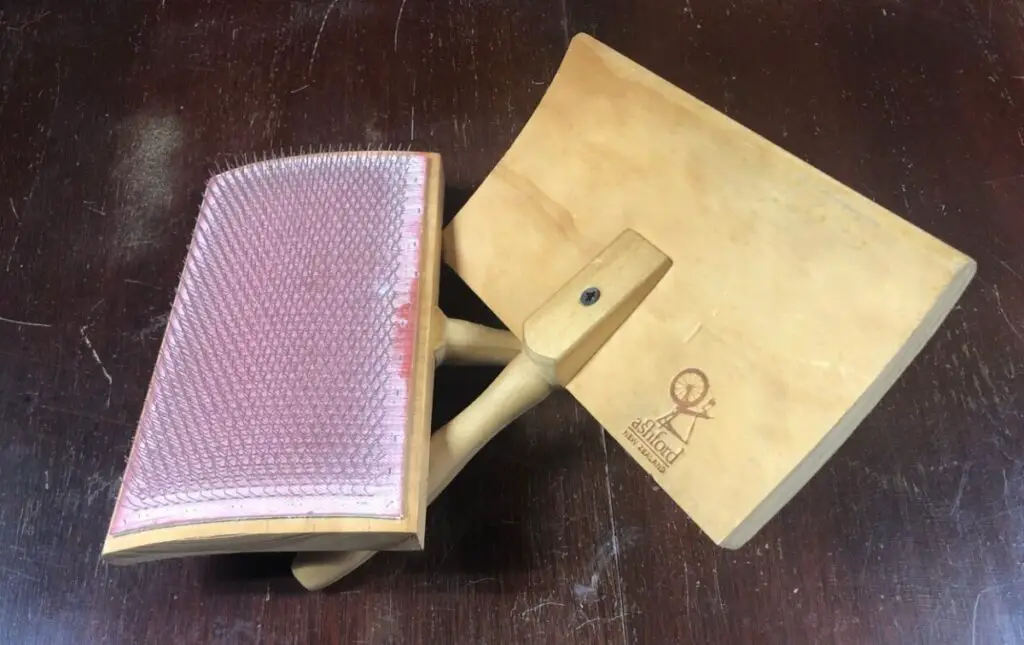
You pass the fiber back and forth between the hand cards fluffing them up and removing debris in the process. Once the fiber is fluffed and clean, the bottom edge is rolled up and then rolled into a cylinder as it’s removed from the carder.
Another way rolags are made is on a blending board. Blending boards are about the size of a standard cutting board but they have the same teeth as a carder.
This flat surface allows the fiber artist to essentially paint with the fiber as they put it on the blending board. Once the blending board is filled how they want, they use two dowel rods to grab the fluffy end of the fiber to create equal-sized rolls of fiber.
I currently don’t have a blending board so here’s a video about how they work to create rolags.
In the above video, they use wool locks on their blending board which happens to be the next fiber preparation we’re gonna talk about.
Wool Locks
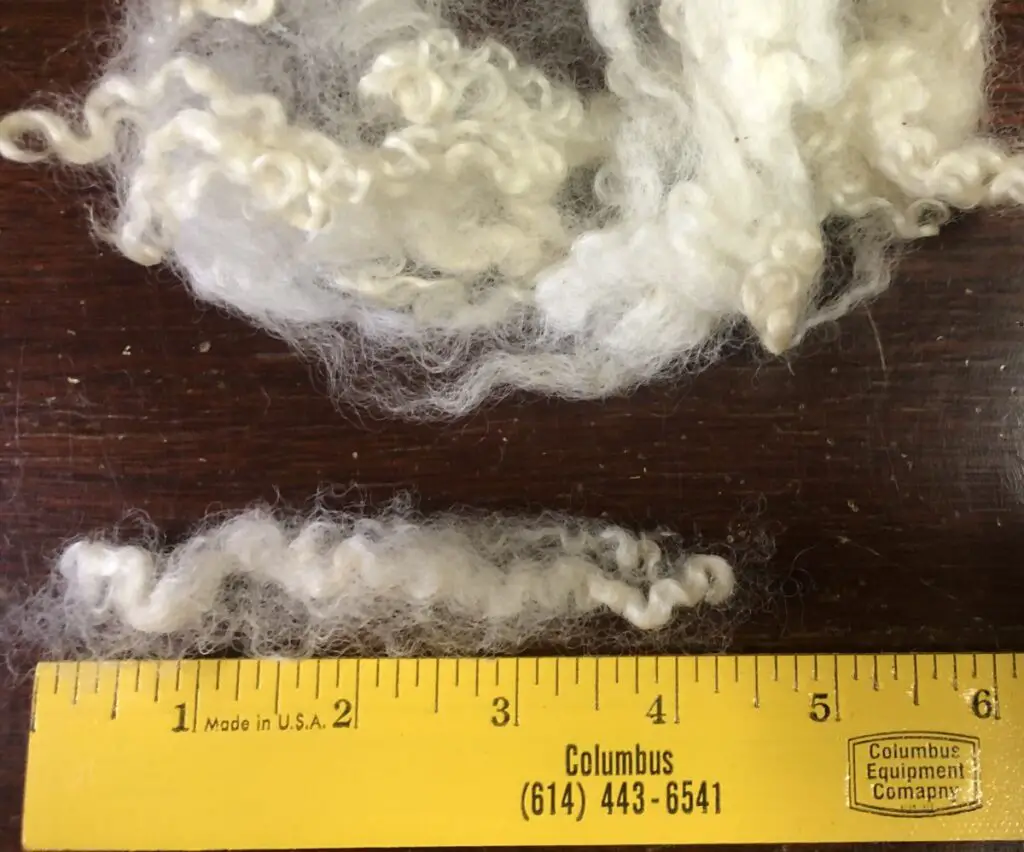
Wool locks are a pretty simple fiber preparation, they refer simply to the uncarded, uncombed wool locks. Now, although they’re uncarded and uncombed, that doesn’t mean they’re unprocessed.
Wool locks have been cleaned and sometimes dyed fun colors before they reach you. Locks have the natural curl of the wool intact which means they are great for adding fun textures to yarn.
They can be added to yarn as you spin to add texture or they can be blended with other fibers to create rolags, batts, or roving. Or the wool locks can be spun as is directly from the lock.
Overall, I think wool locks are one of the most versatile fiber preparations because of how many ways they can be used.
Wrap Up
We’ve traveled down the fiber preparation pipeline and learned everything there is to learn about all the fiber preparations out there. I also hopefully answered the question what is wool roving which is why you can in the first place.
Before you leave, let’s do a review to make sure you know the differences between all the fiber preparations.
Wool roving is a continuous strand of fiber pulled off a carder in strips. Roving is a woolen preparation which means it creates fluffy soft yarns perfect for hats and scarves.
Wool top is fiber that has been combed through wool combs to align the fibers all in one direction and then pulled into a strip similar to roving.
This same direction is what’s known as a worsted preparation and creates sleek strong yarns great for socks and gloves.
Batts are a large blanket of fiber taken off of a drum carder altogether instead of taking it off in a strip like roving is. Batts are typically created for making art yarns but are also woolen preparation because they are made on a carder.
Rolags are created on either hand cards or blending boards. They’re small cylinders of fiber that are very easy to spin. Hand cards and blending boards use the same teeth as drum carders so they are also a woolen preparation.
Last but not least, wool locks are simply washed wool locks that haven’t been combed or carded and they’re used to add texture to yarn. They can also be used in other wool preparations to add texture.
Now you’re an expert on all things fiber preparations and you hopefully know what fiber to look for when picking out fiber for a product. So, get out there and make something awesome!
